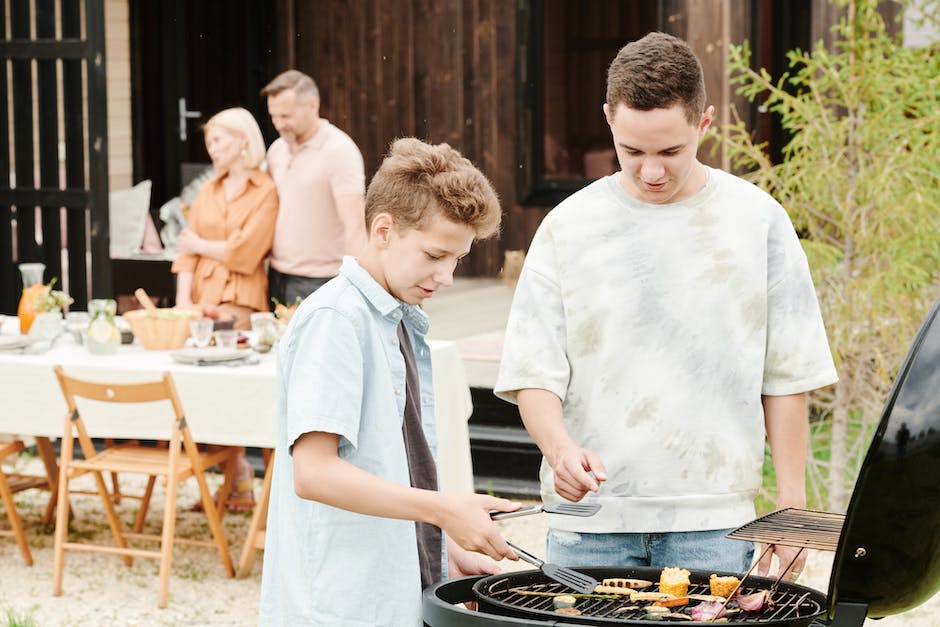Childhood obesity has emerged as one of the most significant health challenges of the 21st century. As we peel back the layers of this complex condition, it becomes evident that its rapid rise stems from a tapestry woven with threads of modern lifestyle choices, environmental conditions, genetics, and socio-economic factors. By fostering a holistic approach that encompasses nutritional education, physical activity, and emotional support within the familial unit, we have the power to influence and reshape the future health of our youngest generation. This essay aims to provide a roadmap for enthusiasts and hobbyists seeking to engage proactively in the prevention of childhood obesity, equipping them with a multifaceted strategy that empowers children to thrive in a balanced and healthy manner.
Understanding Childhood Obesity
What’s Behind the Rising Tide of Childhood Obesity?
Hey there, lovely parents and caregivers!
Today let’s dive into a topic that’s been making waves in conversations around the kiddos’ health – childhood obesity. It’s a topic that hangs heavy on many of our hearts, and it’s rising faster than dough in a warm kitchen. We’re all gearing up with the best intentions to keep our little ones healthy, but the numbers keep puffing up. So, what’s going on?
First off, it’s clear that the world our children are growing up in today is very different from the tree-climbing, tag-playing days many of us remember. The digital revolution has our kids swiping screens more often than skipping ropes, and that sedentary lifestyle sneaks up on them. Let’s not forget those addictive video games that can keep them glued to the couch for hours, digits getting a workout while the rest of their bodies, not so much.
Then there’s the food factor. Busy family schedules mean quick meals are often on the menu, and those convenience foods can be loaded with extra calories, sugars, and fats – not exactly the building blocks for a healthy bambino. It’s a battle at the grocery store, with marketing gurus putting all those sugar-laden snacks right at eye-level for our little ones. Plus, who hasn’t caved to a kiddo’s plea for that super-cool snack with their favorite cartoon character on the box? We’ve all been there.
Schools have a part to play too. Remember when gym class and recess felt like they lasted enough to get all the wiggles out? Physical education and playtime might be shrinking, leaving kids with less time to burn off those PB&J sandwiches. And speaking of what’s being served up in the cafeteria – that’s a whole other scoop of mashed potatoes.
It’s not just about less movement and more munching, either. Stress plays a big role. Yes, our young ones can get stressed, and that anxiety can lead to comfort eating. Schoolwork, social pressures, world events, they all add to a towering sundae of stress that no one wants their child to have to swallow.
Folks, it’s crucial we take a moment here to remember that no one’s placing blame. We’re all in this community of parenting together, figuring out the best way to navigate this complex world for the sake of those beautiful, bright-eyed kiddos who fill our lives with so much joy.
So, let’s keep this conversation going, sharing tips, offering shoulders, and celebrating small victories in our homes and online. It’s about taking steps, however small, like swapping out some snacks for fruits and veggies or turning a walk into a family affair. Together, as a community of caring adults, we’ve got this. Let’s help our kiddos sail toward a future that’s as healthy as it can be, with us leading the charge, hand in hand.
Until next time, let’s keep sprinkling that parenting magic wherever we go. Keep shining, dear ones!

Nutrition Education for the Whole Family
Fueling the Family Future: The Superpower of Nutritional Smarts
In the journey of family life, there’s a secret powerhouse waiting to be unlocked in the kitchen and grocery aisles — nutritional knowledge. It’s like having a GPS for health; it guides families to make better choices and steer clear of the pitfalls of poor eating habits that have become all too common.
Think of this knowledge like a treasure map, leading to the X that marks the spot of well-being and vitality. It starts with understanding the basics: proteins, carbohydrates, fats, vitamins, and minerals. Knowing what these are and their functions isn’t just for health professionals; this wisdom belongs in the hands of every caretaker and young mind across family dinner tables.
When families get savvy about what’s in their food, labels become less of a mystery and more of a game-plan. It’s about deciphering the code behind ingredients and nutritional values, which can be quite the adventure. Encouraging kids to join in, turning it into a learning game, empowers them to make informed choices, transforming them into health heroes in their own right.
Meal planning isn’t just a task; it’s an act of love and foresight. With nutritional knowledge, meal prep becomes an exercise in creativity and education. It’s about balancing colors on the plate – not just for aesthetic appeal but for nutritional variety. Mixing and matching fruit and veggies, experimenting with whole grains, and introducing lean proteins shake things up in a fun and engaging way.
Families that cook together, stay healthy together. Getting everyone involved in the kitchen is a fantastic way to pass on cooking skills and nutritional tips. It’s fostering a deeper understanding and respect for what fuels the body. Plus, it’s no secret that food cooked at home tends to be healthier and more nourishing, packing a punch for both the body and the wallet.
Now, a profound side of this superpower is coping with dietary requirements and allergies. When families know their nutritional stuff, they can adapt meals without a fuss, ensuring that everyone at the table has something delicious and safe to tuck into.
Finally, this powerful knowledge isn’t self-contained — it’s infectious. Sharing insights with friends, family, and the broader community ignites conversations and can influence positive change far and wide. It’s about creating ripples that turn into waves, setting in motion a healthier, happier future for all.
So, arm with forks, spoons, and a heap of nutritional know-how, watch as families transform their health landscapes. It’s time to elevate mealtime into a journey of discovery and empowerment, and it all starts with what is known about the fuel that is put into the engine of life. Bon appétit to a future where knowledge on the plate translates to power in living!

Creating a Physically Active Family
With an understanding of how our lifestyle and food choices affect family well-being, let’s focus on refreshing ways to animate our days with movement and joy.
Geocaching Adventures:
Consider geocaching, a real-world outdoor treasure hunt using GPS devices. This exciting activity can take families to unexplored parks and hidden neighborhood spots while combining hiking with the thrill of searching for hidden treasures.
Creating a Family Olympics:
Take inspiration from the Olympics to create a series of events and games in the backyard or local park. Include a range of activities such as relay races, long jumps, or makeshift gymnastics to cater to different interests and abilities.
Dance Parties:
Who doesn’t love to boogie? Regular family dance parties are not just great cardiovascular workouts but also ultimate mood lifters. Create a playlist with everyone’s favorite tunes and let loose in the living room.
Volunteering for Physical Causes:
Offer time as a family to local cleanup efforts or dog shelters. The physical activity associated with volunteering not only benefits the community but keeps everyone active and instills values of hard work and service.
Biking Exploration:
Swap the four wheels for two and embark on family bike rides. Whether it’s a scenic route or a cycling trail, this mode of exploration is as healthy as it is environmentally friendly.
Plant a Family Garden:
Gardening is a wonderful way to be active and teach kids about where food comes from. Digging, planting, weeding, and harvesting are fantastic exercises that yield fresh produce and beautiful flowers.
Implementing ‘Active’ Coupons:
Create a coupon system where each coupon is an indication for a spontaneous physical activity break—be it jumping jacks, a quick walk, or a family plank challenge.
Taking on Home Improvement Projects:
Whether painting a room or building a treehouse, home projects can involve heavy lifting, stretching, and bending that equate to a good workout. And the shared sense of accomplishment afterward is simply priceless.
Nighttime Walks and Stargazing:
Wrap up the day with a walk under the stars. This calmer activity promotes relaxation, conversation, and curiosity.
By substituting sedentary habits with these spirited and varied activities, families can strengthen their bond and foster a love for an active lifestyle that extends far beyond the household. It’s about developing a joyous and energetic rhythm of life that resonates through each family member, crafting smiles as bright as their health.

Healthy Meal Planning and Prep
Can Meal Planning Be the Key to Healthier Eating? Harnessing a Holistic Approach
In the dynamic rhythm of family life, fostering a healthier eating schedule can often feel like navigating a corn maze—exciting, yet a little perplexing. With meal planning, however, parents can turn what appears to be a daunting task into an achievable goal that benefits the entire family. Let’s lift the lid on this culinary treasure chest and discover how it can be a golden key to unlocking a pattern of healthier eating habits.
Beyond the kitchen counters and the cooking pots, meal planning stretches its beneficial arms out to every member of the family. Picture this: a fridge and pantry stocked with pre-planned ingredients for the week, a colorful chalkboard adorned with a menu that entices excited chatter around the dinner table, and a sense of calm knowing that the question, “What’s for dinner?” has an appetizing answer ready.
Now, let’s square up against the widely-believed myth that eating healthy is synonymous with bland and boring dishes. With meal planning, variety is the spice of life! Incorporating a diverse range of flavorful, nutrient-packed foods throughout the week ensures meals remain exciting and satiate everyone’s taste buds. Toss in seasonal produce, experiment with new recipes, and stir in different cultural cuisines to transform mealtime into a global tour.
Not only does meal planning facilitate richer diets, but it also helps regulate portion sizes. By allocating just the right amount of ingredients beforehand, it can be a straightforward method to prevent overeating and cut down on food waste—a pat on the back for both health and environmental mindfulness.
But where to start? Grab a meal planner, magnetic or digital, and begin with a nourishing breakfast menu. Then ladder up: sketch out lunch boxes that children can brag about at school, and cap it off with dinners that draw every family member back home like a magnetic pull of warmth and togetherness.
One can’t emphasize enough the magic that happens when children take part in meal planning and preparation. From fetching groceries to washing veggies, every little hand involved is a step toward lifelong healthy habits and skills. They sprout a strong root system in the understanding of nutrition, portion control, and the satisfaction of eating something created with their own hands.
But let us not forget the benefits that stretch beyond the home front. A household that revolves around healthy meal planning initiates ripples of change among friends, relatives, and the wider community. From swapping recipes at playdates to organizing potlucks with healthful themes, the community spirit catches on.
In this venture, let mealtime be more than just consuming; let it be a nurturing space where good food and great memories blend seamlessly. Whether it’s sprouting beans in a jar on the windowsill or indulging in the sweet aroma of a freshly baked loaf of bread, these shared experiences are a feast for the soul. Add to that the occasional outdoor activities like geocaching adventures or family biking explorations, and a full-circle approach to healthier living is forged.
In a nutshell, meal planning isn’t just a means to eat healthier; it’s a canvas for creating vital family experiences, a gatekeeper of variety, and an architect of balance. It’s an opportunity to connect, to teach, and to relish in the joy of wholesome, hearty foods, so let’s embrace it with eager hearts and open arms.

Emotional Wellbeing and Obesity
Emotional health is like the roots of a tree. Just as roots are not visible yet critical to the growth and health of a tree, emotional health underpins the wellbeing of our kids, influencing various aspects of their life, including their weight.
When children are emotionally balanced, they’re more likely to make healthier eating choices and engage in active play rather than seek comfort in screen time or unhealthy snacking. Emotional distress, on the other hand, can lead to emotional eating as a way to cope, often sending kids straight into the arms of sugary snacks and fattening foods, which are easily accessible and advertised as quick fixes for happiness.
The ripple effects of a child’s emotional state impact their food choices and activity levels directly. For instance, a happy child may take pleasure in running around with friends, mirroring the joys of their emotional state with physical zest. By contrast, a child wrestling with emotional turbulence may withdraw, preferring solitude and inactivity, sometimes accompanied by overeating. This creates a cycle that is hard to break without addressing the underpinning emotional issues.
How, then, can we integrate emotional wellbeing into our fight against childhood obesity? Let’s consider these steps:
Communication is Key
Facilitate open conversations about feelings at home. Knowing they have a safe space to express themselves, children are less likely to bottle up emotions and more likely to cope in healthy ways.
Mindful Eating
Encourage children to tune in to their hunger cues and eat mindfully. This practice helps them understand the difference between eating for hunger and eating for comfort.
Model Emotional Intelligence
When adults demonstrate healthy ways to handle stress, such as taking a walk or talking through problems, children learn to mimic these behaviors.
Promote Emotional Literacy
Activities like reading books or playing games that explore emotions help increase children’s emotional vocabulary, enabling them to articulate and manage their feelings better.
Prioritize Quality Family Time
Engaging in family activities fosters a sense of belonging and self-esteem, acting as a buffer against emotional distress.
Reframe Setbacks
Encourage children to see obstacles not as failures but as opportunities for learning and growth, decreasing the likelihood of turning to food for consolation.
Encourage Physical Activity as a Stress Reliever
Help children see movement as a way to improve mood, not just as exercise. Yoga, walking, or even dancing can be powerful tools for managing stress.
Seek Professional Help When Needed
If emotional issues seem to be a persistent barrier to a child’s healthy lifestyle, seeking help from a counselor or psychologist can be invaluable.
By approaching childhood obesity not just from a nutritional or physical standpoint, but also from an angle of emotional health, we move towards cultivating a more holistic strategy, one that nourishes the heart, body, and soul of the family.
And so, let’s flip the narrative: rather than solely focusing on the scale and the dinner plate, let’s consider our children’s laughter, their curiosity, and their joy. Let’s invest in their emotional health with the same zeal as their physical health, and watch as our collective efforts contribute to a brighter, lighter future.

Community and Environmental Influence
Cultivating a Green Thumb: How Gardening Benefits Your Child’s Health and Well-being
In the patchwork quilt of factors contributing to a child’s health, the environment they grow up in is one of the most vibrant squares. Sure, we’ve talked about nutrition, activity levels, and the sneaky impact of marketing, but let’s dig a little deeper – right into the soil of our backyards. Gardening, that age-old pastime, is making a comeback, and it’s sowing more than just seeds for our little ones; it’s nurturing their well-being on multiple levels.
Think about it; a child involved in gardening is a child grounded in the cycles of life. They’re learning responsibility as they care for plants, understanding cause and effect as they see the consequences of neglect or the rewards of diligence. But beyond these life lessons, gardening is a haven for promoting physical activity. It beckons kids to bend, stretch, and get their hands dirty – quite the opposite of the sedentary habits mentioned before.
The natural environment of a garden can also foster emotional health. As they nurture their tiny green charges, children experience joy, excitement, and even disappointment – a full range of emotions. Gardening can be a serene escape from the overstimulation of screens and an opportunity for tranquil family time. It’s this emotional connectivity that supports the idea that our children’s still waters run deep and need to be both cherished and challenged.
Speaking of emotions, consider the dishes a family harvest can inspire. With homegrown herbs, vegetables, and fruits, mealtime transforms into a sustainable practice. Children get to savor the literal fruits of their labor, increasing their openness to trying new, wholesome foods – a welcome change to fast-food culture. This isn’t just a victory for nutritional content; it’s a win for broadening palates and sparking curiosity in other cultures’ cuisines.
Moreover, gardens are ecosystems in miniature. They invite pollinators, teach about the importance of conservation, and highlight the impact of each individual choice on our planet. Instilling these environmental values early can set the stage for a lifetime of Earth-friendly decisions, a necessity in our ever-changing world.
Beyond the boundaries of your backyard, community gardens offer a communal space to grow, collaborate, and support one another, something that’s known to enrich neighborhoods and reduce the feeling of isolation. They’re a tangible manifestation of the adage, “It takes a village to raise a child,” providing a platform for intergenerational learning and bonding.
Let’s not overlook the creative aspect. Gardens are blank canvases. Planning and designing a garden spark imaginative thinking and artistic expression, whether it involves plotting out space or choosing the color combinations of different blooms. And when children see their ideas come to life and flourish, it waters the seeds of self-esteem.
In embracing gardening, we’re not just planting vegetables or flowers; we’re cultivating young minds to appreciate growth, care, and sustainability. It’s a long-term investment in their health, providing them with the tools to lead a balanced life. So, grab a shovel, rally the troops, and turn a corner of your world green. Your children’s future might just depend on it.

The battle against childhood obesity is not solitary but a collective endeavor that calls for the engagement of families, schools, and communities. By integrating the principles discussed—from enhanced nutrition literacy and creative physical activities to fostering emotional health and addressing societal influences—we stitch together a safety net that can catch and uplift our children. Emphasizing healthy habits and supportive environments offers more than a preventative measure; it’s an investment in nurturing resilient, happy, and energetically involved citizens of tomorrow. Let us each take responsibility in our respective roles and turn the tide on childhood obesity, ensuring the longevity and well-being of future generations.
Writio is an AI content writer that crafts top-notch articles and blogs for websites. This page was created by the incredible Writio.
Thank you for reading this post, don't forget to subscribe to our free newsletter
!
